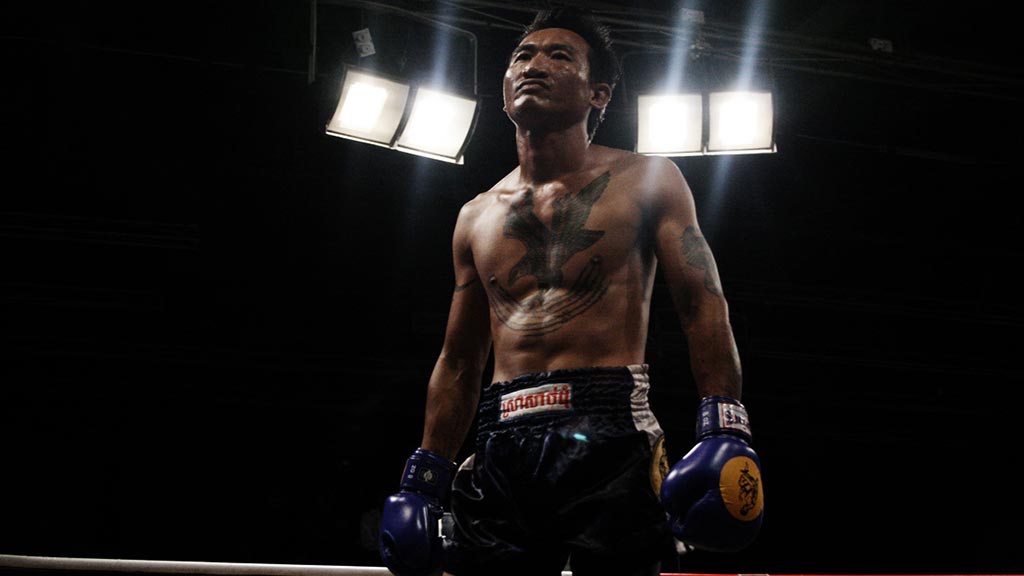Martial arts are an important and ancient part of South East Asian culture. Many South East Asian nations have their own style and tradition and compete with each other for credibility, authenticity and popularity. Cambodia is no different, and has two particularly strong traditions – Pradal Serey (also known as Kun Khmer) and Bokator – both of which have been claimed to be the “original” South East Asian martial art.
History
Due to the destruction of Cambodian culture and heritage under the Khmer Rouge in the 1970s, much information about the tradition of Khmer boxing has been lost. Many of the masters died, or fled the region. Even after the fall of the regime, former boxers (as is the case with many specialists in Cambodian arts) were frightened to revive the art and there has only really been a resurgence in the last 15 years. After research conducted in 2011, a number of scholars and authorities agreed upon “Kbach kun boran Khmer” (literally “Cambodian ancient fighting arts”) upon as the umbrella term for native pre-modern fighting arts.
Martials arts have certainly been part of Khmer culture for centuries. Bas-reliefs at the base of the entrance pillars to the Bayon temple depict various fighting scenes. One relief shows two men appearing to grapple, another shows two fighters using their elbows – both techniques used in different forms of Khmer boxing.
In 1995, Cambodia was keen to unite all the ASEAN nation martial arts under one name “Sovannaphum boxing” or “SEA Boxing”, representing Thailand, Cambodia, Laos and Myanmar. However, this was not accepted by other nations – especially Thailand – who were keen to preserve their unique form and name of their international sport.
Pradal Serey
Pradal Serey (meaning “free fighting”), also known as Kun Khmer, is a kickboxing form descended directly from early forms of Khmer fighting techniques. It is a national sport in Cambodia and has been slightly altered from the ancient form to allow for modern competition. Pradal Serey is hugely popular in Cambodia and many fights take place across the country every week. The sport has an organizing body called Cambodian Boxing Federation (CBF). Multiple tournaments are screened every week across a variety of TV channels. There is a Pradal Serey boxing stadium in Siem Reap, known as “The Ring of Champions”. The 700-seater CTN Angkor Arena hosts tournaments every Wednesday featuring fighters from all over the world and broadcasts live on Cambodian Television Network (CTN).
Some boxing specialists are wary of the modernization and popularization of boxing. Tournaments used to happen in pagodas, which meant spectators and boxers alike behaved in a respectful manner. The modern stadium sport has a very different feel and is linked heavily with gambling, which older practitioners feel to be disrespectful to the art.
A match consists of five three-minute rounds with a one-and-a-half or two minute break between each round. Boxers wear leather gloves and nylon shorts. Rules prohibit biting, blows to the back and the genitals, holding onto ropes and striking the opponent while on the ground. Victory is obtained by knockout. Pradal Serey has four types of attacking moves – punches, kicks, elbows and knee strikes. While it is often characterized as a kick-boxing martial art, actually more victories in Pradal Serey come from elbow strikes.
Bokator
Bokator is often confused with Pradal Serey, or used as a phrase for Khmer boxing as a whole. However, it is a specific version of Khmer boxing that has been popularized in recent years. San Kim Sean is often credited with reviving this style of boxing in Cambodia. A boxing practitioner and teacher, Sean fled to the US during the Khmer Rouge era. Returning to Cambodia, he began teaching Bokator in Phnom Penh in 2001 and also began seeking out the remaining living masters (known as Bokator Lokru – or Bokator teachers). In 2006 Phnom Penh hosted the first national Bokator competition with 20 lokrus taking part. Many people claim that Sean “invented” the Bokator name and style of boxing and are dismissive of it as just another modern version of the ancient Khmer tradition.
Bokator uses weapons techniques, with bamboo staffs and short sticks. Unarmed attacks involve a combination of elbow and knee strikes, shin kicks, submissions and ground fighting. Bokator fighters wear different colored kromas around their waist denoting their level. The first grade is white, followed by green, blue, red, brown, and finally black, which has 10 degrees. Fighters also wear silk cords around their heads and biceps.
Bokator is a broader sport that Pradal Serey, which is a more condensed style of fighting using a smaller range of techniques. The Bokator art has 341 sets based on life and nature and in the unarmed spectrum of the art alone there are over 8000 different fighting techniques. There are different styles for different animals (bird, naga, horse etc) all of which have different moves associated with them.
Practicing the art
Most Cambodian boxers compete to earn money to feed their families and do not come from privileged backgrounds. In the past, boxers were paid by the crowd and rewarded with food, money and alcohol if they did well. This still happens today but now organized fights have official fees. This can be a little as $15, or as much as $100 for famous name boxers. Fighters can earn up to $1000 in international tournaments.
There are a number of Bokator and Kun Khmer fighting schools around the country – the biggest concentration existing in Phnom Penh and a few in Siem Reap. Battambang is also well-known for producing Kun Khmer champions. There are very few classes available that are aimed at tourists, as most schools exist to train the next generation of Cambodian fighting champions. However there are some that will welcome drop-ins to their classes, although be prepared for an intense physical workout, and the likelihood that few people will speak English, or a second language.https://www.siemreap.net/attractions/body-soul/khmer-boxing/




.jpg)
.jpg)













No comments:
Post a Comment